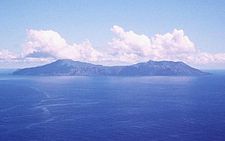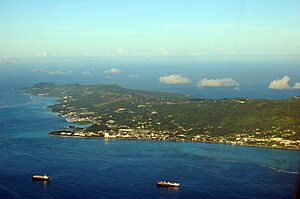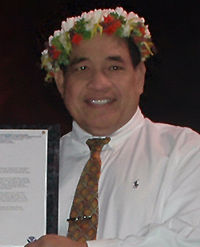Mariana | ||||||||||||||||||||||||||||||||||||||||||||||||||||||||||||||||||||||||||||||||||||||||||||||||||||||||||||||||||||||||||||||||||||||||||||||||||||||||||||||||||||||||||||||||||||||||||||||||||||||||||||||||||||||||||||||||||||||||||||||||||||||||||||||||||||||||||||||||||||||||||||||||||||||||||||||||
| Mariana Islands - Find Mobile Phones, Internet. Country Code | ||||||||||||||||||||||||||||||||||||||||||||||||||||||||||||||||||||||||||||||||||||||||||||||||||||||||||||||||||||||||||||||||||||||||||||||||||||||||||||||||||||||||||||||||||||||||||||||||||||||||||||||||||||||||||||||||||||||||||||||||||||||||||||||||||||||||||||||||||||||||||||||||||||||||||||||||
Mariana Islands - Northern Mariana Islands | ||||||||||||||||||||||||||||||||||||||||||||||||||||||||||||||||||||||||||||||||||||||||||||||||||||||||||||||||||||||||||||||||||||||||||||||||||||||||||||||||||||||||||||||||||||||||||||||||||||||||||||||||||||||||||||||||||||||||||||||||||||||||||||||||||||||||||||||||||||||||||||||||||||||||||||||||
| Internet Domain name TLD - .mp | ||||||||||||||||||||||||||||||||||||||||||||||||||||||||||||||||||||||||||||||||||||||||||||||||||||||||||||||||||||||||||||||||||||||||||||||||||||||||||||||||||||||||||||||||||||||||||||||||||||||||||||||||||||||||||||||||||||||||||||||||||||||||||||||||||||||||||||||||||||||||||||||||||||||||||||||||
| Calling code - +1-670 | ||||||||||||||||||||||||||||||||||||||||||||||||||||||||||||||||||||||||||||||||||||||||||||||||||||||||||||||||||||||||||||||||||||||||||||||||||||||||||||||||||||||||||||||||||||||||||||||||||||||||||||||||||||||||||||||||||||||||||||||||||||||||||||||||||||||||||||||||||||||||||||||||||||||||||||||||
| Commonwealth of the Northern Mariana Islands Sankattan Siha Na Islas Mariånas | ||||||||||||||||||||||||||||||||||||||||||||||||||||||||||||||||||||||||||||||||||||||||||||||||||||||||||||||||||||||||||||||||||||||||||||||||||||||||||||||||||||||||||||||||||||||||||||||||||||||||||||||||||||||||||||||||||||||||||||||||||||||||||||||||||||||||||||||||||||||||||||||||||||||||||||||||
 -
- 
| ||||||||||||||||||||||||||||||||||||||||||||||||||||||||||||||||||||||||||||||||||||||||||||||||||||||||||||||||||||||||||||||||||||||||||||||||||||||||||||||||||||||||||||||||||||||||||||||||||||||||||||||||||||||||||||||||||||||||||||||||||||||||||||||||||||||||||||||||||||||||||||||||||||||||||||||||
| Flag - Seal | ||||||||||||||||||||||||||||||||||||||||||||||||||||||||||||||||||||||||||||||||||||||||||||||||||||||||||||||||||||||||||||||||||||||||||||||||||||||||||||||||||||||||||||||||||||||||||||||||||||||||||||||||||||||||||||||||||||||||||||||||||||||||||||||||||||||||||||||||||||||||||||||||||||||||||||||||
| Anthem :Gi Talo Gi Halom Tasi
(Chamorro) Satil Matawal Pacifiko (Carolinian) | ||||||||||||||||||||||||||||||||||||||||||||||||||||||||||||||||||||||||||||||||||||||||||||||||||||||||||||||||||||||||||||||||||||||||||||||||||||||||||||||||||||||||||||||||||||||||||||||||||||||||||||||||||||||||||||||||||||||||||||||||||||||||||||||||||||||||||||||||||||||||||||||||||||||||||||||||

Capital
- Saipan
| 17°11′N 146°45′E / 17.183°N 146.75°E / 17.183;146.75 Official language(s)
- English,
Chamorro,
Carolinian
| Government
- Presidential
representative democracy
| Head of State
- Barack Obama
| Governor
- Benigno R. Fitial
| Lt. Governor
- Eloy S. Inos
| Commonwealth - in union with United States
| Covenant - 1975
| Commonwealth status - 1978
| end of trusteeship - 1986
| Area
| Total - 477 km
(195th) | 184.17 sq mi Water (%) - negligible
| Population
| July 2007 estimate - 86,616 (198th
| 2000 census - 69,221
| Density - 168/km (n/a) | 63.8/sq mi Currency
- United States dollar ( | USD
Time zone - (UTC+10
| This article is about the Commonwealth of the Northern Mariana Islands. For the Mariana Archipelago, see Mariana Islands.
| The Northern Mariana Islands |
The Northern Mariana Islands has a population of 80,362 (2005 estimate). The official 2000 census count was 69,221. More than 90% of the Commonwealth's population lives on the island of Saipan. Of the fourteen other islands, only two, Tinian and Rota, have a significant population. The islands of Agrihan and Alamagan have fewer than ten residents, and the remaining ten islands are unpopulated. The Northern Mariana Islands have the lowest male to female sex ratio in the world with an average of 76 men to every 100 women. - That is due to the overwhelming female majority of foreign workers, especially in the garment industry. -
The Commonwealth's centre of government is located in the village of Capitol Hill on the island of Saipan. As the island is governed as a single municipality, most publications term "Saipan" as the Commonwealth's capital.
Anatahan Volcano is a small volcanic island 80 miles (130 km) north of Saipan and is about 6 miles (10 km) long and 2 miles (3 km) wide. Anatahan began erupting suddenly from its east crater on May 10, 2003, at about 6 p.m. (0800 UTC). Since then it has continued to alternate between eruptive and calm periods. On April 6, 2005, approximately 50,000 cubic meters (1,800,000 cu ft) of ash and rock were ejected, causing a large, black cloud to drift south over Saipan and Tinian.
Three days after he had arrived, Magellan fled the archipelago under attack—a portentous beginning to its relationship with the Spanish. The islands were then considered by Spain to be annexed, and therefore under their governance, from the Philippines, as part of the Spanish East Indies. The Spanish built a Royal Palace in Guam for the Governor of the Islands. Its remains could still be seen in 2006.
Guam was an important stop-over from Mexico for galleons carrying gold and other cargo between the Philippines and Spain. There are several lost sunken Spanish galleons off Guam.
In 1668 the islands were renamed by Padre Diego Luis de San Vitores as Las Marianas after Mariana of Austria, widow of Spain's Philip IV.
Most of the islands' native population (90%-95%)6 - died from the diseases brought by the Spanish or intermarried with non-Chamorro settlers under Spanish rule, but new settlers, primarily from the Philippines and the Caroline Islands, were brought in to repopulate the islands. Despite this, the Chamorro population did gradually resurge, and Chamorro, Filipino and Carolinian language and ethnic differences remain basically distinct in the Marianas.
To facilitate cultural and religious assimilation, Spanish colonists forced the Chamorros to be concentrated on Guam for a period of time. By the time Chamorros were allowed to return to the present-day Northern Marianas, Carolinians (from present-day eastern Yap State and western Chuuk State) had settled in the Marianas. Hence Carolinians and Chamorros are both considered as indigenous to the Northern Marianas and both languages are official in the commonwealth (but not on Guam).
Japan declared war on Germany during World War I and invaded the Northern Marianas. In 1919, the League of Nations, precursor of the United Nations, awarded the islands to Japan by mandate. During Japan's occupation, sugar cane became the main industry of the islands, and labor was imported from Japan and associated colonies (especially Okinawa and Korea). In the census of December 1939, the total population of the South Pacific Mandate was 129,104, of which 77,257 were Japanese (including ethnic Taiwanese and Koreans).
Hours after the Attack on Pearl Harbor, Japanese forces from the Marianas launched an invasion of Guam on December 8, 1941. Chamorros from the Northern Marianas, then under Japanese rule for more than two decades, were brought to Guam to assist the Japanese administration. This fact, combined with the harsh treatment of Guamanian Chamorros during the brief 31-month occupation, created a rift between the two populations that would become the main reason Guamanians rejected reunification referendum approved by the Northern Marianas in the 1960s.
The war did not end for everyone with the signing of the armistice. The last group of Japanese soldiers surrendered on Saipan on December 1, 1945. On Guam, Japanese soldier Shoichi Yokoi hid out in the village of Talofofo until 1972.
Between the end of the invasion and the Japanese surrender, the Saipan and Tinian populations were kept in concentration camps. Japanese nationals were eventually repatriated, and the indigenous Chamorro and Carolinians returned to the land.
Repeating the separation of powers in other U.S. territories and state governments,
executive power is exercised by the Governor of the Northern Mariana Islands. Legislative power is vested in the bicameral Northern Mariana Islands Commonwealth Legislature. Senate President Joseph M. Mendiola is a founding member of the Outlying Areas Senate Presidents Caucus. The judiciary is independent of the executive and the legislative branches.
However, politics in the Northern Mariana Islands is often "more a function of family relationships and personal loyalties" where the size of one's extended family is more important than a candidate's personal qualifications. Some critics, including the author of the political website Saipan Sucks, charge that this is nepotism carried out within the trappings of democracy.9 - 10 -
On December 22, 1990, the United Nations Trusteeship Council terminated the TTPI as it applied to the CNMI and five other of the TTPI's original seven districts (the Marshall Islands and the Federated States of Micronesia (Chuuk, Kosrae, Pohnpei and Yap)), this was acknowledged in under United Nations Security Council Resolution 683 passed on the same day.
Under the Covenant, in general, United States federal law applies to CNMI. However, the CNMI is outside the customs territory of the United States and, although the internal revenue code does apply in the form of a local income tax, the income tax system is largely locally determined. According to the Covenant, the federal minimum wage and federal immigration laws "will not apply to the Northern Mariana Islands except in the manner and to the extent made applicable to them by the Congress by law after termination of the Trusteeship Agreement."11 -
The CNMI has a United States district court which exercises jurisdiction over the District of the Northern Mariana Islands (DNMI), which is coterminous with the CNMI. The United States District Court for the Northern Mariana Islands was established by act of Congress in 1977 and began operations in January 1978. The court sits on the island of Saipan, but may sit other places within the Commonwealth. The district court has the same jurisdiction as all other United States district courts, including diversity jurisdiction and bankruptcy jurisdiction. Appeals are taken to the Ninth Circuit. The district court's local rules specifically require lawyers to wear shoes to court.12 -
Since the founding of the CNMI in January 1978 and its qualified residents becoming U.S. citizens in November 1986, the CNMI was represented in the United States (and especially Washington, D.C.) by a Resident Representative , who was elected at-large by CNMI voters and whose office was paid for by the CNMI government. In 2008, Congress enacted Pub.L. 110-229, title VII of which established a CNMI delegate's seat. Gregorio Sablan was elected in November 2008 as the first CNMI delegate and took office in the 111th Congress.
The Northern Mariana Islands had successfully used its position as a free trade area with the U.S., while at the same time not being subject to the same labor laws. For example, the $3.05 per hour minimum wage in the Commonwealth, which lasted from 1997 to 2007, was lower than in the U.S. and some other worker protections are weaker, leading to lower production costs. That allowed garments to be labeled "Made in USA" without having to comply with all U.S. labor laws. However, the U.S. minimum wage law signed by President Bush on May 25, 2007, will result in stepped increases in the Northern Marianas' minimum wage to reach U.S. level by 2015.14 - The first step (to $3.55) became effective July 25, 2007, and a yearly increase of $0.50 will take effect every May thereafter until the CNMI minimum wage equals the nationwide minimum wage.
In the extreme, the island's exemption from U.S. labor laws had led to many alleged exploitations including recent claims of sweatshops, child labor, child prostitution and even forced abortions.15 - 16 -
A separate immigration system outside of federal U.S. control (scheduled to end on November 28, 2009) has resulted in a large number of Chinese migrant workers (about 15,000 during the peak years) employed in the islands' garment trade. However, the lifting of World Trade Organization restrictions on Chinese imports to the U.S. in 2005 had put the Commonwealth-based trade under severe pressure, leading to a number of recent factory closures. Adding to the U.S.-imposed scheduled wage increases, the garment industry is expected to become extinct by 2009.17 - dated info
Agricultural production, primarily of tapioca,
cattle,
coconuts,
breadfruit,
tomatoes, and melons exists, but is relatively unimportant in the economy.
Some extreme labor practices, not common elsewhere in the United States, had occurred. Some of these labor practices include forcing women to have abortions, as exposed in the March 18, 1998, episode of ABC News' 20/20 , and enslaving women and forcing them into prostitution, as in the U.S. Department of Justice conviction of several CNMI traffickers in 1999 attests. In 2005 and 2006, the issue of these regulatory exemptions in the CNMI was brought up during the American political scandals of Congressman
Tom DeLay and lobbyist
Jack Abramoff.
Non-native islanders are not allowed to own land, but can lease it.
Mail service for the islands is provided by the U.S. Postal Service (USPS). Each major island has its own zip code in the 96950-96952 range, and the USPS state abbreviation for the CNMI is "MP" (the uppercase version of its Internet top-level domain).18 - 19 - For phone service, the islands are included in the North American Numbering Plan, using area code 670.18 -
The Northern Islands (north of Saipan) form the Northern Islands Municipality. The three main islands of the Southern Islands form the municipalities of Saipan,
Tinian, and Rota, with uninhabited Aguijan forming part of Tinian municipality.
Because of volcanic threat, the northern islands have been largely evacuated. Human habitation is limited to Agrihan, Pagan, and Alamagan, but population varies due to various economic factors, including children's education. The Census of April 2000 registered just six people in all of the Northern Islands municipality (then residing on Alamagan), and the Northern Islands' mayor office is located in "exile" on Saipan.
Saipan, Tinian, and Rota have the only ports and harbors, and are the only permanently populated islands.
|



